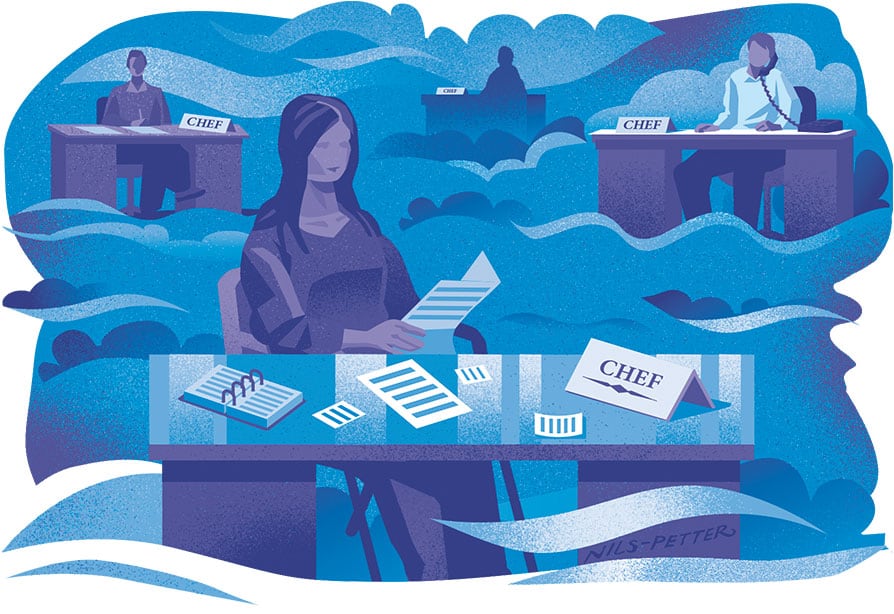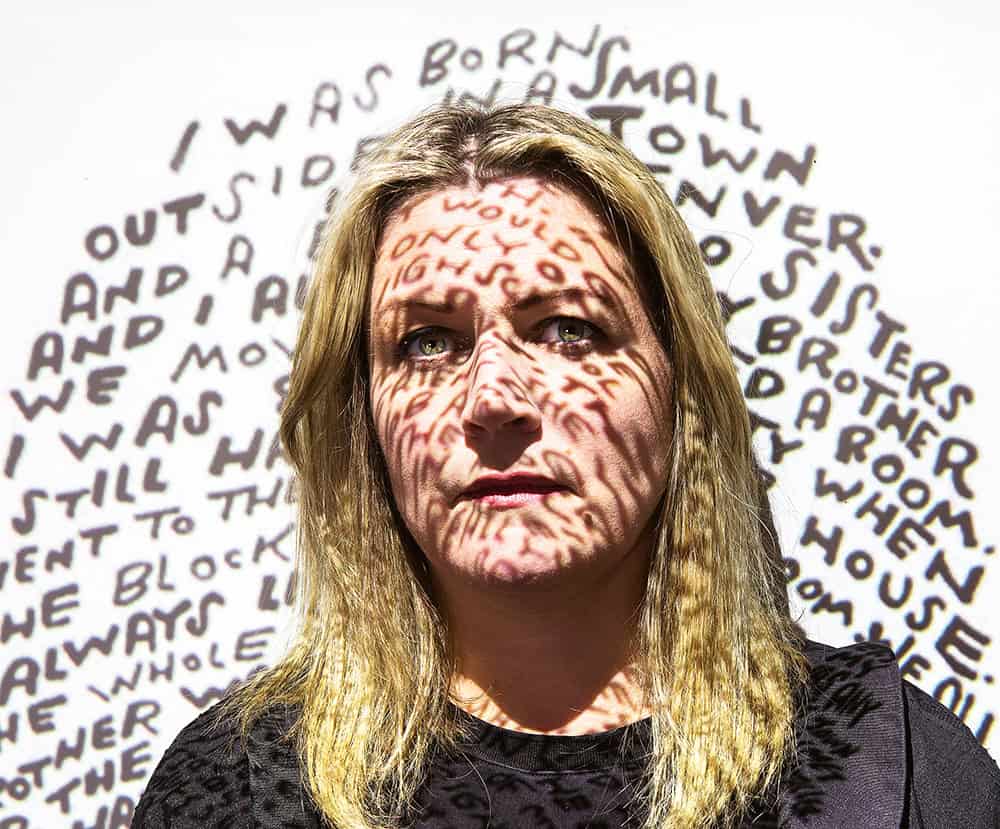Stress, anxiety and diminished mental well-being. According to the Public Health Agency of Sweden, students suffer symptoms of mental ill-health to a greater extent than working people of the same age. What can teachers do to help students with mental health challenges?
This is a question that the staff at Student Health Services at Umeå University are often asked, says Jonas Lundberg, Head of Operations.
“It depends on the situation, of course, but the key is generally to dare to ask, to listen and to try to get a picture of what lies behind the issue. We are often quick to offer suggestions and solutions, but listening is a great help,” he says.

Jonas Lundberg
Head of Operations, Umeå University
If the situation is more complex or if the student has been feeling unwell for a longer period, Lundberg’s advice is to refer the person to Student Health Services, the local health centre or the nearest Youth Centre (ungdomsmottagningen). “Teachers can also call us at Student Health Services and discuss the situation.”
When it comes to things that are a natural part of life, such as grief or crisis, his experience is that many people think that professional intervention is required. But ordinary empathy and humanity often mean a lot in such situations.
“Listening and empathy are worth their weight in gold. They send an important signal that it is possible to cope and get through the situation. It is also a good idea to ask how people are sleeping, eating and dealing with daily routines.”
If you are worried that there is a danger of suicide, the best thing is to ask the student, he believes. It is good not to be alone as a teacher in the situation. For example, you can call and discuss it with the 1177 health support and advice service or an emergency psychiatric unit, preferably together with the student. You can also refer the person to various other support services and helplines.
“There is sometimes a fear of bringing up suicide, that you will accidentally trigger something, but we know that this is not the case. It is always better to ask.”
It can sometimes be a good idea to think about whether you are the right person to contact the student. Perhaps there is someone else in the team who is closer to the class and has a better chance of having a good conversation. Depending on your life situation, it may also be appropriate to set limits to your involvement.
“Signalling ‘I will listen to you’ and then not living up to that is not a good thing to communicate to the student,” says Lundberg. “It is important to think about how much you can take on yourself, and sometimes you need to let someone else take over.”
Katja Lindert Bergsten is a senior lecturer at the Department of Psychology at Uppsala University and co-author of a pilot study on students’ mental well-being. The report showed that several UK universities train staff in mental health issues. The University of Glasgow also has a student mental health policy, with advice for supervisors on dealing with students who display mental health symptoms.
“We also saw that there have been good initiatives in some faculties at Swedish universities,” she says, “but they are often dependent on a few enthusiastic teachers, and when they disappear, it falls apart. The measures need to be institutionalised so that they are not reliant on the commitment of specific individuals.”

Katja Lindert Bergsten
Senior lecturer in psychology, Uppsala University
She believes that it is easier to provide support if a student is obviously sad or approaches you and wants to talk. If someone looks pale and unhappy, she might also approach and ask how the student is doing.
“It is an invitation: if you want to share something, I am here. Once I understand what it is, I can refer them to the appropriate support or help them myself if, for example, they are anxious about their studies or have unreasonably high expectations of themselves.”
If she senses that a student is feeling mentally unwell or seems to be under the influence of some kind of substance, she raises it with her colleagues, the programme coordinator, the director of studies and student counsellors.
“It is like a bunch of adults getting involved and caring about the kid. I check whether this is something the others have noticed, so that we are not all working in our own silos but approach it together. Then it is the programme coordinator or director of studies who is responsible for inviting the student for a discussion.”
It can be tough as a teacher to have to make decisions that are negative for a student who is already feeling low, such as failing the person on an exam or a course. But it is important not to let your worries impact such decisions, says Lindert Bergsten.
If you are afraid that the decision will break the student, it is a good idea to try to establish contact. Try to convey that the person will not pass, and that these things happen sometimes, but it does not mean that the student is a bad person.
“Then you say ’Let’s sit down with the student counsellor and work out how we can take one step at a time, so you can take these credits at a pace that works for you’,” she says.
Anita Pettersson-Strömbäck is a senior lecturer at the Department of Psychology and former chief health and safety officer at Umeå University. She says that research shows that it is important that the higher education institution or department has a plan for how to deal with a student who is experiencing mental health problems.
“Individual teachers should not have to stand there and think ‘Help, what do I do now?’. If a teacher discovers that someone is suffering from mental ill-health, my advice is to contact the student counsellor, who also needs to have procedures in place for dealing with this type of situation,” she says.

Anita Pettersson-Strömbäck
Senior lecturer in psychology and former chief health and safety officer, Umeå University
Higher education institutions have a work environment responsibility for students, but Pettersson-Strömbäck says that they are not set up for this. It is not possible to have professional development dialogues with every student to identify individuals in the same way as you do for employees. Instead, Umeå University tries, for example, to systematically monitor the students’ situation through surveys.
There is also a coordinator who works with students’ work environment. She sits on important organisational forums to convey their perspective.
“We also have student health and safety representatives who bring up what is happening in the different student groups. That is a way for us to have our ear to the ground.”
Jonas Lundberg says that the staff at Student Health Services at Umeå University sometimes get questions from teachers about whether they can contact a student who they fear is not feeling well mentally, and what integrity repercussions that might have.
“You may need to have the courage to trust your professional judgement,” he says. “In our experience, most students appreciate you showing that you care if it is done in a respectful way.”
HE institutions are responsible for providing a good study environment
The Higher Education Ordinance stipulates that state sector universities and colleges are responsible for ensuring that students have a good study environment and that there is preventive healthcare in place that promotes their mental health. HE institutions also have a work environment responsibility for students.
There is no formal obligation for individual teachers to act if a student is mentally unwell. However, if it is a question of discrimination, harassment or sexual harassment, the HE institution is obliged to investigate the matter and take action under the provisions of the Discrimination Act. This obligation arises as soon as a member of staff becomes aware that a student feels they are a victim of such behaviour.
Sources: The Swedish Work Environment Authority, The Equality Ombudsman (DO), The Higher Education Ordinance and The Swedish Higher Education Authority (UKÄ).
















